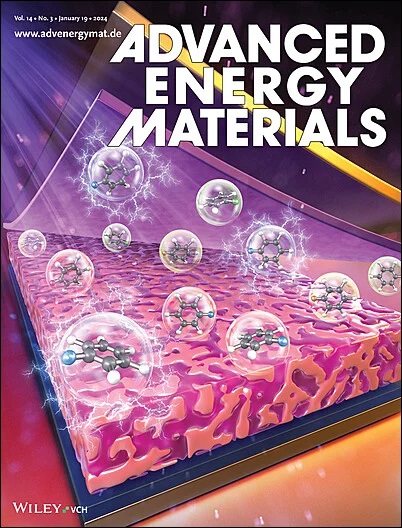Atomic Interface Engineering of NiFe‐LDH@MXene via Halide Ions for High‐Rate Chloride‐Ion Batteries
IF 24.4
1区 材料科学
Q1 CHEMISTRY, PHYSICAL
引用次数: 0
Abstract
While layered double hydroxides (LDHs) stand as a typical 2D anion‐intercalated cathodes for chloride ion batteries (CIBs), their electrochemical viability is significantly limited by inherently poor electronic conductivity and sluggish interlayer transport kinetics, particularly under high current density operations. Herein, a space‐charge heterostructure through electrostatic self‐assembly of positively charged NiFe LDH nanosheets and negatively charged MXene layers is constructed. This strategy establishes a built‐in electric field at the atomic interface via electron‐withdrawing Cl高倍率氯离子电池中卤化物离子nif - LDH@MXene的原子界面工程
虽然层状双氢氧化物(LDHs)是氯离子电池(cib)中典型的二维阴离子插入阴极,但其电化学活性受到固有的较差的电子导电性和缓慢的层间传输动力学的显著限制,特别是在高电流密度操作下。本文通过静电自组装带正电荷的NiFe LDH纳米片和带负电荷的MXene层,构建了一个带空间电荷的异质结构。该策略通过吸电子Cl -“桥”在原子界面建立了一个内置电场,通过MXene的电子高速公路和LDH的离子存储通道的空间解耦增强了Cl的吸附。所得的1NiFe‐LDH@2MXene异质结构阴极在1000 mA g−1下具有119.1 mAh g−1的显著可逆容量,并且每循环的容量衰减率为0.034%。综合表征表明,NiFe‐LDH@MXene异质结构的Cl -⁻插入动力学的增强是由MXene的集成和LDH@MXene异质界面上大量电子的积累所增加的伪容性存储所控制的,从而产生了一个内建的电场,降低了有效的肖特基势垒。通过将这种方法扩展到氟离子电池(FIB)和溴离子电池(BIB)配置的F -和Br -插层类似物,建立了一种通过载体特异性配位调节设计多阴离子存储系统的通用策略。
本文章由计算机程序翻译,如有差异,请以英文原文为准。
求助全文
约1分钟内获得全文
求助全文
来源期刊

Advanced Energy Materials
CHEMISTRY, PHYSICAL-ENERGY & FUELS
CiteScore
41.90
自引率
4.00%
发文量
889
审稿时长
1.4 months
期刊介绍:
Established in 2011, Advanced Energy Materials is an international, interdisciplinary, English-language journal that focuses on materials used in energy harvesting, conversion, and storage. It is regarded as a top-quality journal alongside Advanced Materials, Advanced Functional Materials, and Small.
With a 2022 Impact Factor of 27.8, Advanced Energy Materials is considered a prime source for the best energy-related research. The journal covers a wide range of topics in energy-related research, including organic and inorganic photovoltaics, batteries and supercapacitors, fuel cells, hydrogen generation and storage, thermoelectrics, water splitting and photocatalysis, solar fuels and thermosolar power, magnetocalorics, and piezoelectronics.
The readership of Advanced Energy Materials includes materials scientists, chemists, physicists, and engineers in both academia and industry. The journal is indexed in various databases and collections, such as Advanced Technologies & Aerospace Database, FIZ Karlsruhe, INSPEC (IET), Science Citation Index Expanded, Technology Collection, and Web of Science, among others.
 求助内容:
求助内容: 应助结果提醒方式:
应助结果提醒方式:


